In 2022, the Irish Air Corps celebrated its centennial. This modest air component fulfils a number of essential tasks in support of the country's defence force. For these operations, a variety of aircraft are available on the roll call.
Text and photos: Emiel Sloot
7 November 2022
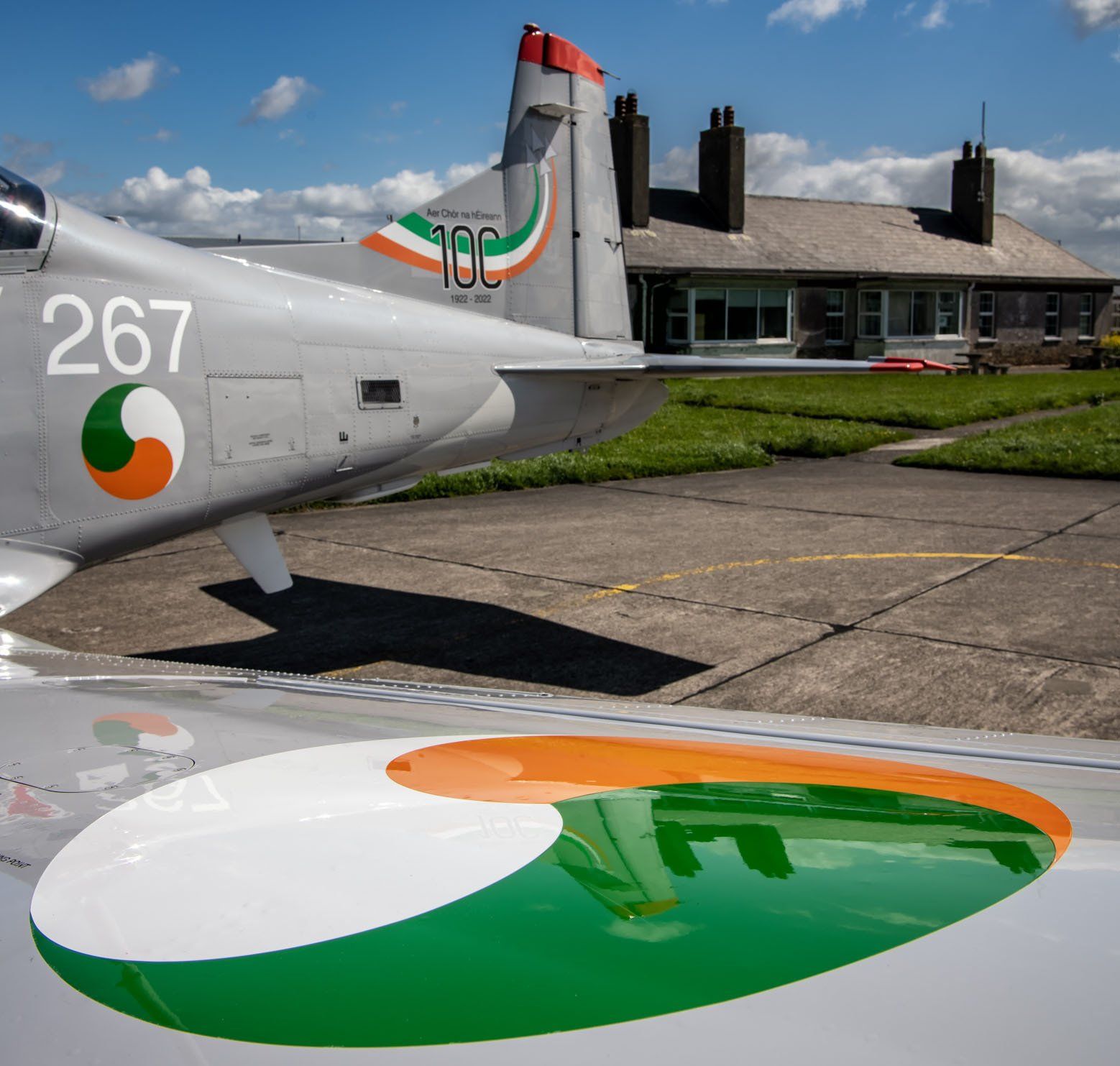
But first, let's have a brief look at the past 100 years. It all started in July 1922, when the National Army Air Service was formed, soon to be transformed into the Irish Air Corps two years later. The first aircraft taken on charge was a Martinsyde A Mk.II biplane, and additional WW I surplus aircraft from British origin quickly followed.
During WW II, a period also known as The Emergency in Ireland, the country had a neutral status. Because of the high demand of equipment by the warring countries as well as embargoes, it proved hard to obtain aircraft for the air corps. Still, some surplus, ex-Royal Air Force Hawker Hurricane Mk I and Mk IIc were acquired for No.1 Fighter Squadron, augmented by a few more active RAF Hurricanes that accidentally landed on Irish soil.
The Hurricanes were replaced by twelve Supermarine Seafire LF Mk III and six Spitfire T Mk IX trainers after the war had ended. With the arrival of the first of six DeHavilland Vampire T Mk 55 on 30 June 1955, the Irish Air Corps entered the jet age. These aircraft were replaced in 1975 by six Fouga CM 170 Magisters, that would become a common sight for years as four of these formed the Silver Swallows display team between 1982 and 1998. That year, the remaining Fougas of the Light Strike Squadron were retired, leaving the Air Corps without a jet attack capability.
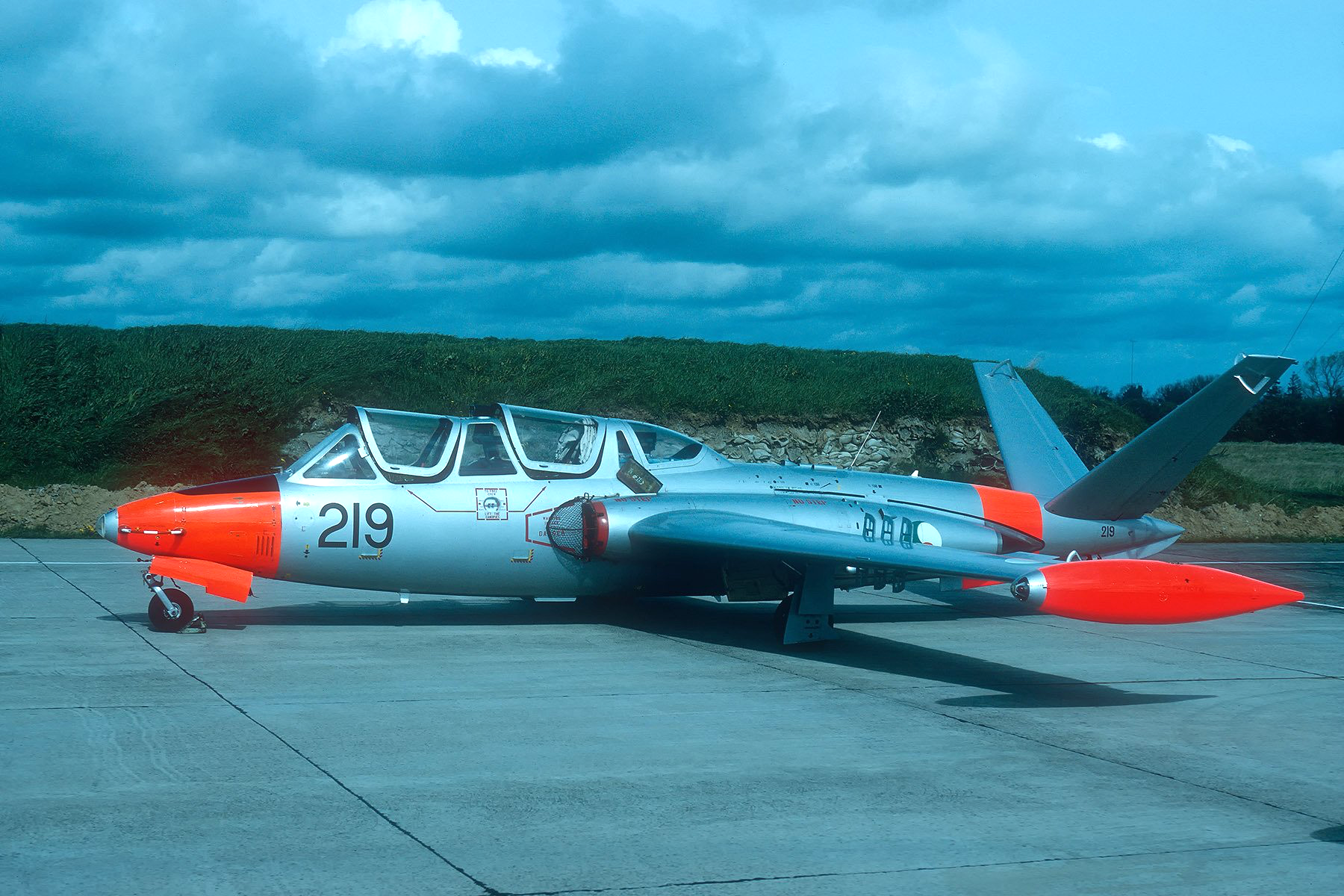
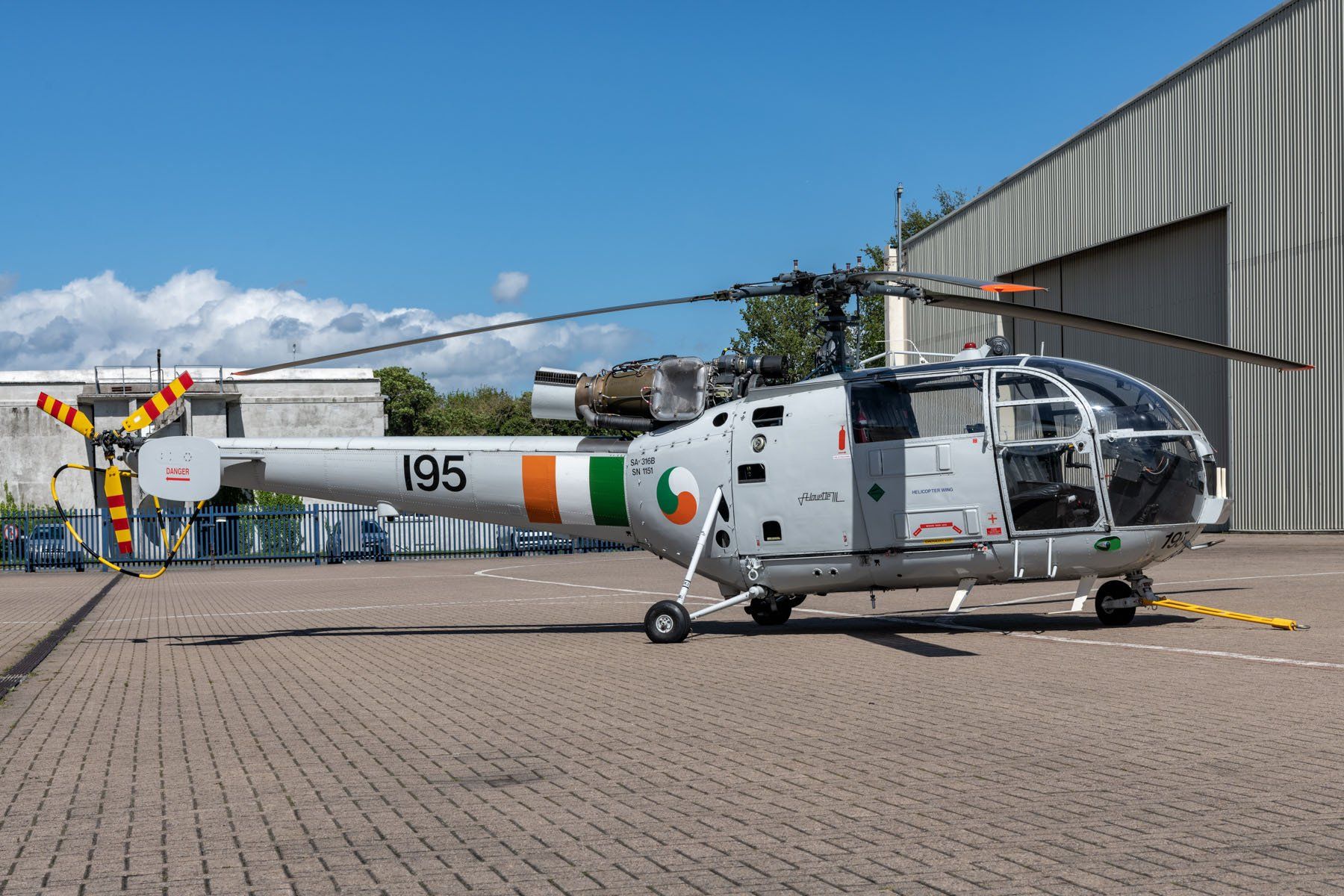
Another milestone was achieved in November 1963 with the establishment of a rotary-wing component. The last of these eight Aérospatiale SA.316B Alouette IIIs that entered service, would eventually fly out in 2007.
The air corps has furthermore operated a great number of aircraft and helicopter types in a similar variety of roles, often in very small numbers. In view of this, the fleet of eleven SIAI-Marchetti SF.260WE Warrior aircraft that operated in the training and light attack role between 1977 and 2007, stood out as relatively large.
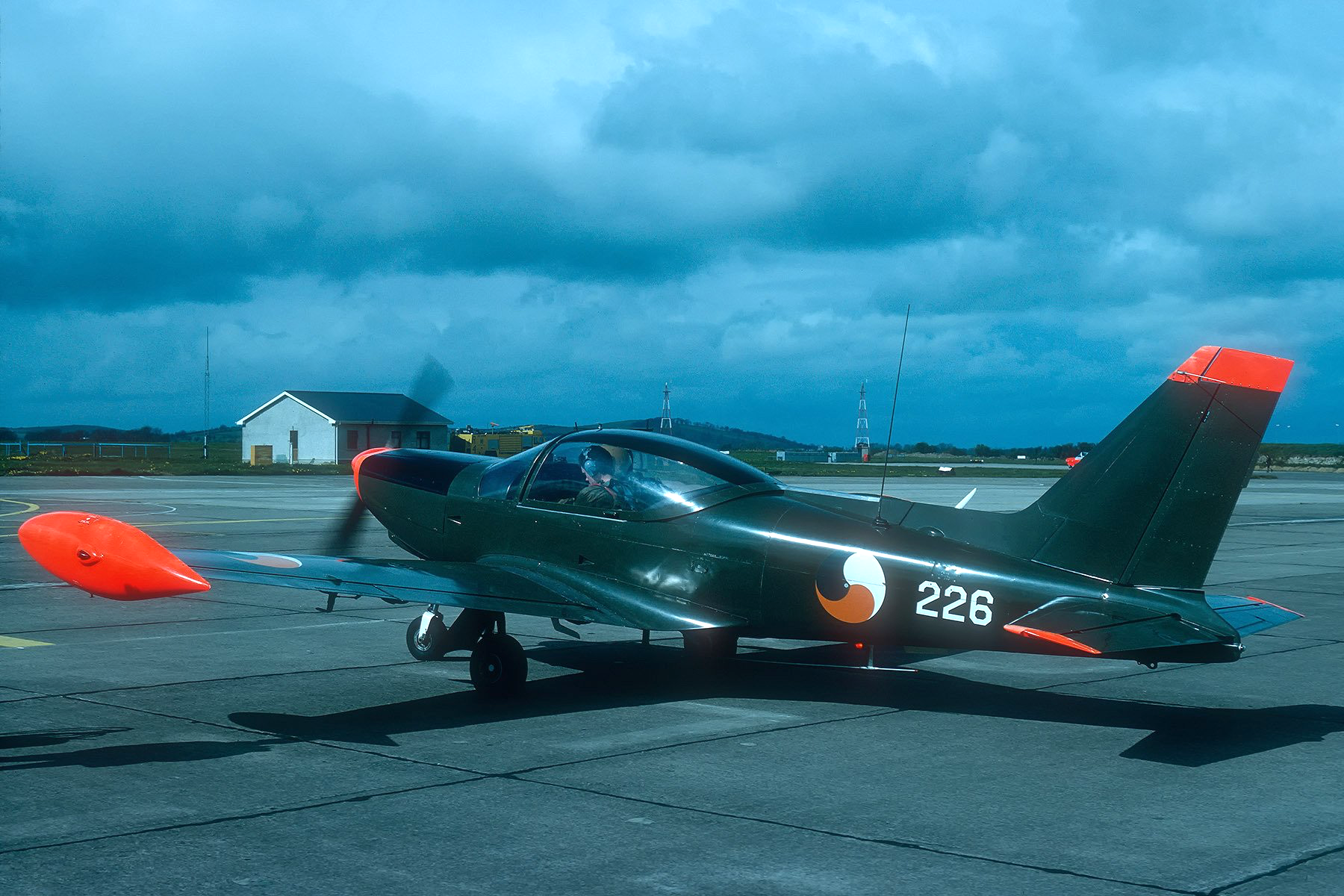
Back to the present. Since the early days, the Irish Air Corps, or An tAerchor na hÉireann as it is called in Gaelic, is located at Casement Aerodrome near Baldonnel. This air base, just outside Dublin, actually houses the whole corps, being its headquarters and all units it controls. The air assets are mostly grouped within two Operation Wings, while two Support Wings take care of activities such as maintenance, logistics, air traffic control and fire fighting. The Flight Training School is part of the Air Corps College.
It is common Air Corps practice to organise each aircraft type within an individual squadron, resulting in a rather large number of units for a relatively small fleet. Most fixed wing activities are conducted by No 1 Operations Wing. Following the temporary lease of a single CN235 from the factory, two CASA CN235M-100 (serialled 252 & 253) were acquired in 1994 and currently form 101 Squadron. These aircraft are mainly deployed on missions of up to six hours, patrolling the Irish Economic Zone around the republic. These waters comprise some 342,000 sq km (132,000 sq mi), equal to about five times the country's land area. The aircraft are equipped with an APS-143C(V)3 OceanEye search radar, a nose-mounted SAFIRE III electro-optical turret featuring both thermal imaging and TV cameras for surveillance, and observer windows from which additional geo-tagged images can be taken for use as evidence in cases that end up in court. For search-and-rescue purposes, a life raft can be dropped off its ramp. The CN235s can also be fitted for air ambulance duties, or act as regular military transport aircraft including use by paratroopers. The two aircraft that entered service in 1994 will soon be replaced by two Airbus Defence C295Ws. A contract worth €221 million was signed on 13 December 2019. The first aircraft rolled out in 2022, and following delivery, these aircraft will basically perform the same roles as the CN235s.
The Learjet 45 in use with 102 Squadron is a regular visitor to Brussels and other European cities, acting a transport for government ministers and officials. A special VIP lounge has been set up at Casement Aerodrome to facilitate these operations. The Learjet, with serial 258, is currently the sole VIP transport aircraft, replacing a Gulfstream IV some ten years ago.

For decades, 104 Squadron relied on their Reims-Cessna FR172 Skyhawk aircraft in the army co-operation role. However, the delivery of four Pilatus PC-12NG finally allowed the retirement of the five remaining, well-used but ageing Skyhawks. Initially, three PC-12NGs were acquired on 19 December 2017 in a contract worth some €43 million. These aircraft, destined for the Intelligence, Surveillance, Target Acquisition and Reconnaissance (ISTAR) role, are known as PC-12 Spectre. For fitting these planes with the required sensors, the aircraft were flown to Rocky Mountain Metropolitan Airport in Colorado, US. Meanwhile, a fourth PC-12NG was bought and delivered to the Air Corps on 2 April 2020, to be used for air transport including air ambulance. Although the last of four to be acquired, it received serial 280, while the three ISTAR conversions received serials 281-283 as these were added to the fleet at a later stage. Their final delivery was partially delayed as a result of Covid-19 restrictions that hampered the conversion process, but ultimately took place on 10 September 2020.
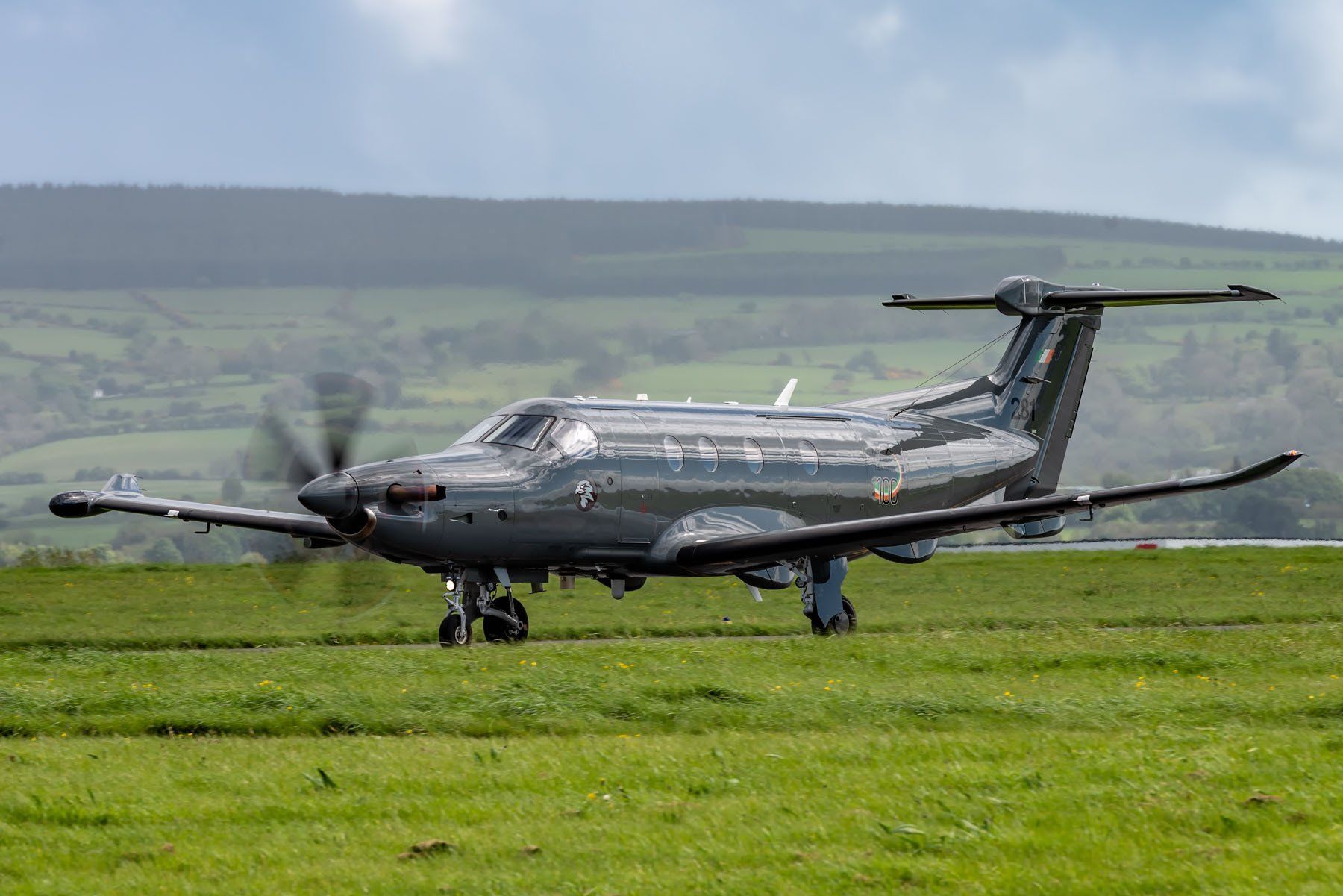
The rotary-wing fleet of the Air Corps is organised within No 3 Operations Wing. A modern fleet of helicopters, that replaced types like the Alouette III and SA365F, is in use with two squadrons. 301 Squadron is equipped with six AgustaWestland AW139 (274-279), the first two entering service in November 2006. Like their fixed wing counterparts, these helicopters can be used for air transport – either in support of the army or just general duties – as well as air ambulance.
Two Eurocopter EC135P2 (270 & 271) are in use with 302 Squadron since November 2005. The helicopters basically operate in the same roles as the AW139s. In addition, the EC135s are used for the rotary-wing training course. Along with 302 Squadron, the Garda Air Support Unit – conducting aerial police tasks – also operates two EC135s along with a Pilatus Britten-Norman BN-2T Defender (serialled 254). The GASU's helicopters (EC135T1 256 and EC135T2 272) are piloted by the Air Corps but are no part of this organisation.

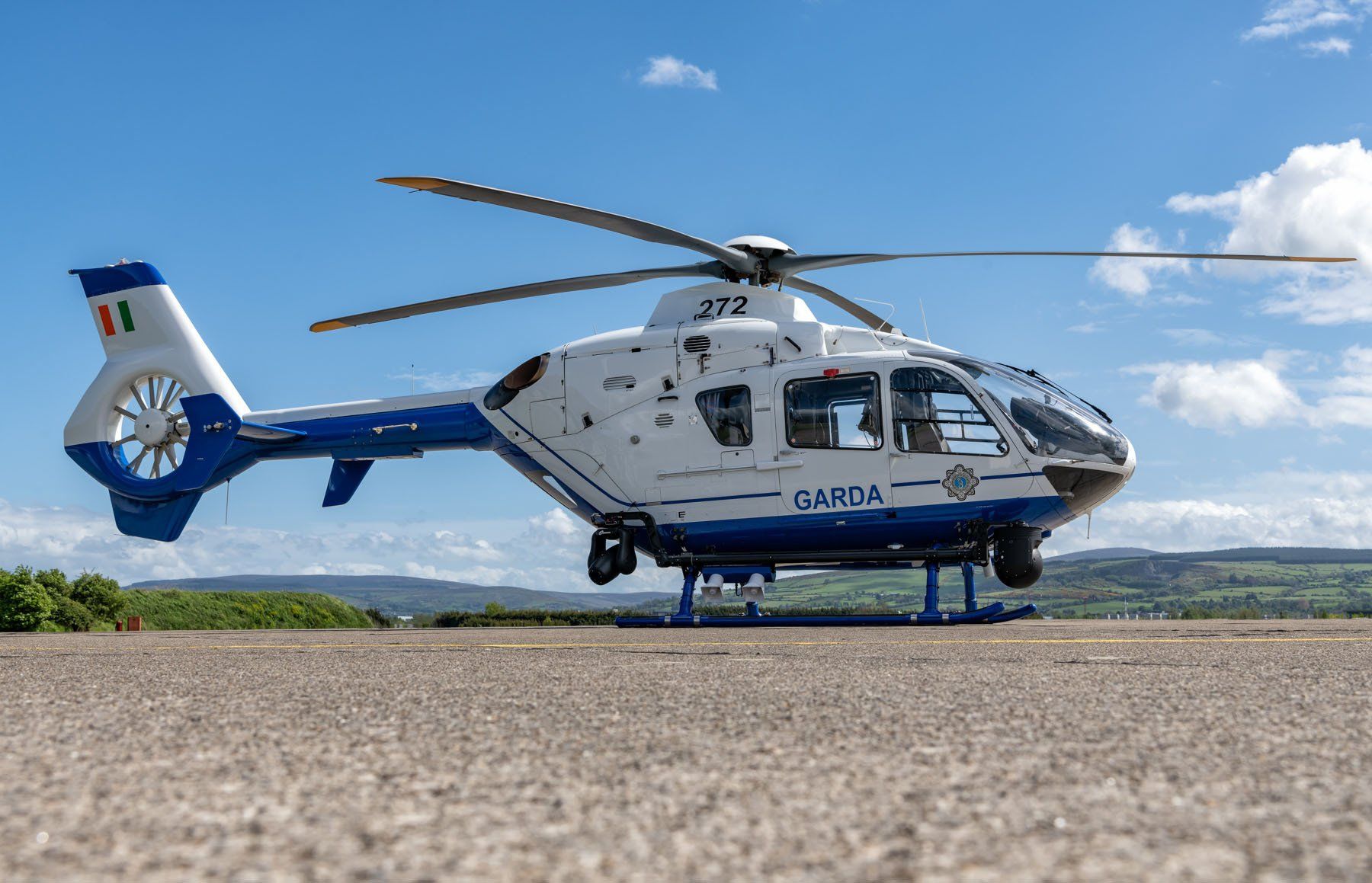
Training new pilots for the Air Corps is a task for the Flight Training School, placed under the responsibility of the Air Corps College. When the SF.260 Warriors approached the end of their service life, eight Pilatus PC-9Ms (260-267) were obtained as replacement in 2002 in a contract worth €60 million that included training aids and logistics. After evaluation, the PC-9M was favoured over the Embraer EMB-314 Super Tucano and the Beechcraft T-6A Texan II. The first three aircraft were handed over at Casement Aerodrome on 21 April 2004. For training purposes, the PC-9Ms can be fitted with two HMP-250 pods with one 12.7-mm machine-gun each, and with two LAU-7A pods with 70-mm folding-fin aerial rockets. Although the armament was bought separately from FN Herstal, the modifications are supported by the Pilatus factory.
One PC-9M (265) was unfortunately lost in an accident on 12 October 2009 while on a cross-country navigation flight to Galway. Sadly, both the flight instructor and trainee pilot were fatally injured. A replacement was later bought and serialled 269, as the local PC-9 flight simulator earlier received serial 268.
To celebrate the centennial anniversary, the Fouga-era Silver Swallows demo team was reformed for the occasion in 2022, displaying amongst others at the RIAT in Fairford, UK.
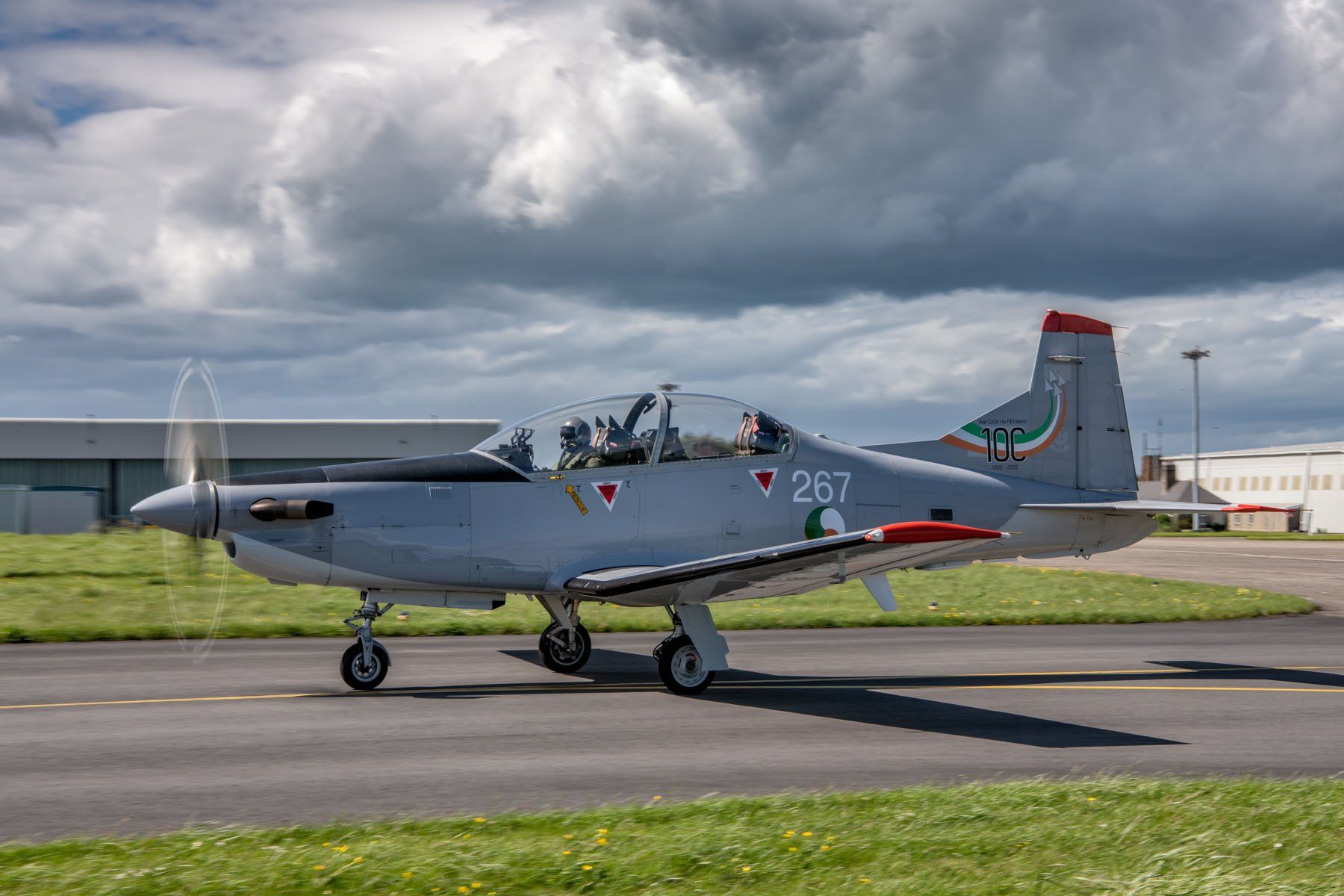
Although modest in size, it is fair to say that the Air Corps is able to carry out its current tasks. The arrival of the new C295W aircraft will enable them to continue the surveillance of the seas around Ireland, although shifts in balances of power worldwide, along with increased tensions, may affect the ability to cope with possible intrusions, both sea- and airborne. Currently, Ireland lacks a proper air surveillance radar system along with fighter aircraft to identify, intercept and escort aircraft out of its airspace. However, in February 2022, a report was published by the Commission on the Defence Forces, recommending the upgrade of the Air Corps into an Air Force, and the acquisition of new systems and equipment specified within two different, so-called Levels of Ambition. Depending on the choices to be made, the air arm could receive a number of fighter aircraft to fulfil these roles, with possible candidates mentioned being the Lockheed-Martin F-16 (both new-built Block 70s and second-hand European surplus aircraft are mentioned as options), the KAI FA-50 or the Saab Gripen. Furthermore, additional airlift capability, both fixed and rotary wing, would be required. All these intentions will necessitate increased defence spendings, but this will prove to be challenging for a country with limited resources. It will be interesting to see to what extent the projected future plans will materialise. ■